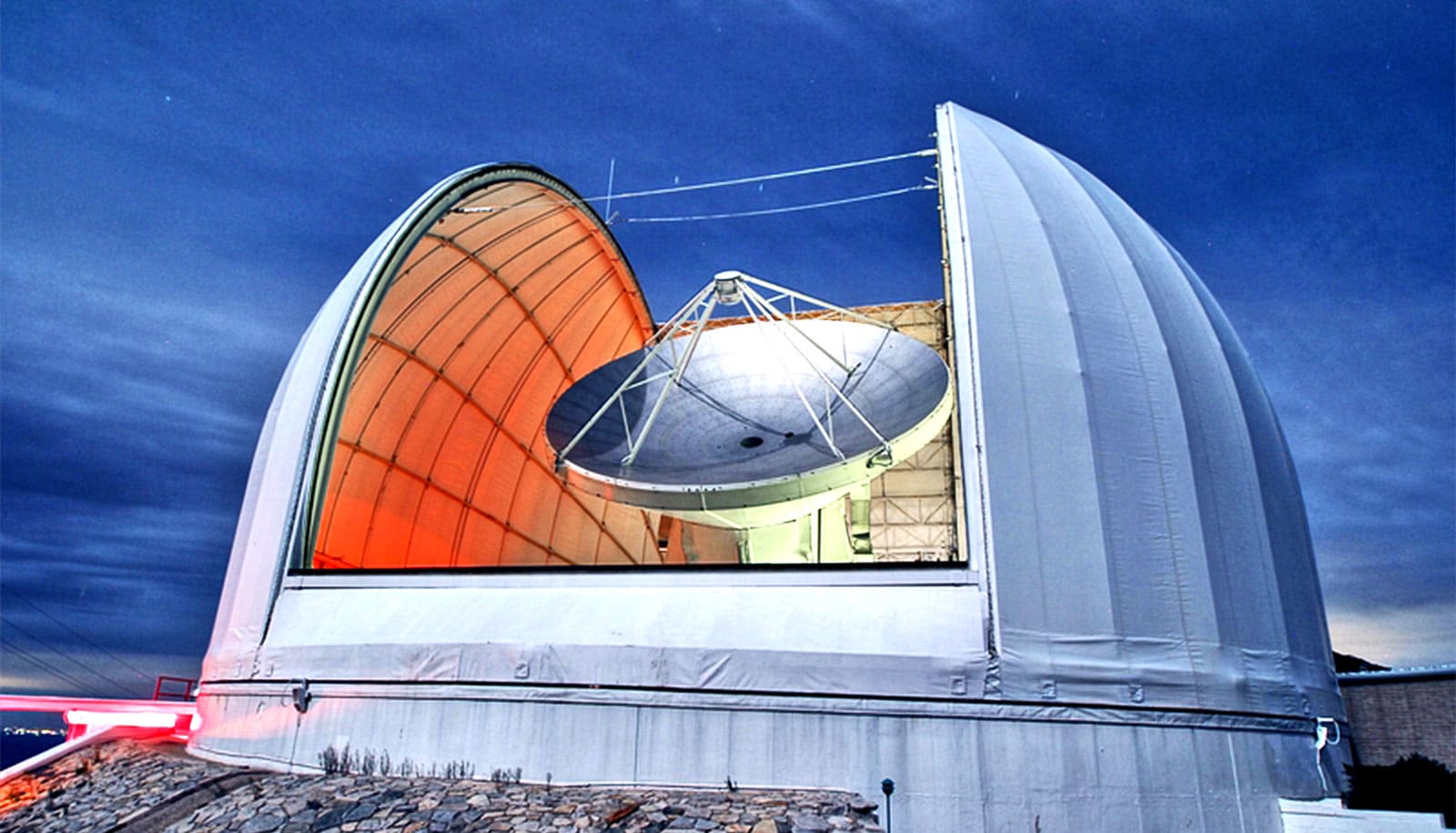Complex organic molecules that could serve as building blocks of life may be more ubiquitous than previously thought in the cold clouds of gas and dust that birth stars and planets.
These molecules also appear much earlier than conventional wisdom suggested, hundreds of thousands of years before stars actually begin to form, the researchers report.
The results in the Astrophysical Journal challenge existing theories that require an environment heated by proto-stars—stars in the making—for complex organic molecules to become observable.
Looking at the Taurus molecular cloud
The study is the first to look for the signatures of two complex organic molecules, methanol and acetaldehyde, in a substantial number of prospective star-forming sites, unlike previous observations, which had mostly focused on individual objects.
Pre-stellar or starless cores are so-named because while they do not yet contain any stars, they mark regions in space where cold dust and gases coalesce into the seeds that will give rise to stars and possibly planets.
“Looking at objects in space is a bit like looking at a photo album with snapshots taken of different people at different stages of life…”
The researchers used the Arizona Radio Observatory’s 12-meter dish telescope on Kitt Peak, southwest of Tucson, to peer through the shroud of gas and dust of 31 starless cores scattered throughout a star-forming region known as the Taurus molecular cloud, located about 440 light-years from Earth. Each core can stretch over a distance that would cover up to 1,000 solar systems lined up next to each other.
“These starless cores we looked at are several hundred thousand years away from the initial formation of a protostar or any planets,” says coauthor Yancy Shirley, associate professor of astronomy.
“This tells us that the basic organic chemistry needed for life is present in the raw gas prior to the formation of stars and planets.”
Mysterious process
While scientists have long known about the existence in space of prebiotic molecules—which provide the building blocks necessary for life as we know it—it has been difficult to come up with conclusive answers to where and how they form and the mechanisms by which they end up on the surfaces of any prospective planet.
“The exact processes at play are still being debated, because the theoretical models still don’t quite match what we see,” says lead author Samantha Scibelli, a third-year doctoral student in Shirley’s research group. “With this paper, we can better constrain the mechanisms of formation that might be taking place by telling the theorists how abundant these molecules are.”
Pre-stellar cores are like windows into the earliest evolutionary steps toward star systems with planets and possibly even life forms, Scibelli explains, estimating that prior to this study fewer than 10 such objects had been studied for complex organic molecules. Similar observations usually focused on one molecule, methanol, whereas the survey described here specifically followed the evolution of methanol and acetaldehyde, an associated alcohol derivate.
For this survey, the team looked for the tell-tale signatures of the two molecules during an observation campaign totaling almost 500 hours of observing time.
They found methanol was present in all 31 pre-stellar cores, and 70% of them contained acetaldehyde in addition to methanol. The authors of the study interpret these results as evidence that complex organic molecules are much more widespread in nascent star-forming regions than previously thought.
These findings challenge traditional theories of how prebiotic molecules form, because they assume a scenario in which the heat from newborn stars provides the necessary environment for organic molecules to form. The abundance of complex organic molecules in clouds of extremely cold gas and dust that are still a long way away from such conditions means other processes must be at work.
“Inside these cores, which we think of as birthplaces, cocoons, and nurseries of low-mass stars similar to our sun, the conditions are such that it’s hard to even create these molecules,” Scibelli says.
“By doing surveys like this, we can understand better how precursors to life come into existence, how they migrate and enter solar systems at later stages of star formation.”
Clues to our galaxy’s history
Scibelli says the survey would not have been possible without the Arizona Radio Observatory on Kitt Peak. Because their content of dust and gas shields pre-stellar cores from view in optical light, astronomers have to revert to much longer wavelengths. Compared to many other astronomical targets, pre-stellar cores are very tranquil environments and extremely cold, so they emit very weak signals.
“Because we wanted to observe this large sample size of cores and get a detailed picture of how the two molecules evolve together, we needed to stare at these cores for a long time,” Scibelli says, adding that it would be nearly impossible to do this type of survey with any other radio telescope because larger observatories are not able to allocate so much time for one project.
Compared to other objects in the universe, like galaxies, pre-stellar cores form on rather short timescales, with lifespans of less than a million years. Driven by processes like turbulence and gravitational forces, the gas and dust in the molecular cloud collapses to form filaments, and it is within those filaments that the denser cores form. Scibelli says the Taurus Molecular Cloud is especially interesting because it provides a glimpse into different evolutionary stages between cores.
“Not all cores may form stars; there is a lot of uncertainty involved,” she says. “We think many of the cores are in early stages, which is why we don’t see them forming stars right now.”
To further refine models of prebiotic molecule evolution in the earliest stages, Shirley’s group plans to home in on individual starless cores to gather a more comprehensive inventory of all the complex organic molecules present.
Objects such as the Taurus star-forming cloud offer important clues to the history of our own solar system, Scibelli says.
“Our solar system was born in a cloud like this, but the cloud is not there anymore for us to see,” she says. “Looking at objects in space is a bit like looking at a photo album with snapshots taken of different people at different stages of life, from their baby days all the way to old age, and in our case starless cores serve as stellar sonograms.”
Funding for the research came from the National Science Foundation. The state of Arizona funds the bulk of operations of the Arizona Radio Observatory with additional support from the National Science Foundation.
Source: University of Arizona



